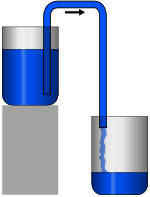This morning I was reading the Australian and noticed in a discussion on the down turn of fortunes of BlueScope Steel I find this comment:
Since 2003, iron ore export prices have jumped from $US10 a tonne to $US140 a tonne and coking coal from $US50 to more than $US230.
Which would seem like a "wow" sort of figure, that seems like enormous growth in the value of iron ore and coal.
But is there more to it than that? Well I think there is.
the comparison is in US Dollars, which have been taking quite a hammering in value over that period. There have been numerous articles in proper literature (not newspapers) complaining that the US Federal Reserve has been printing too much money and causing inflation. This leads to situations where the dollar becomes worth less. Even if you play monopoly and have an extra stash of money under the table the other players will get angry with you won't they?
So what else can we compare it with? Well I say that money is a formalized exchange media, and that its "floating" is an experiment which history has indicated to be a little unreliable. Other commodities can be a source of exchange. Normally we pick something which is:
- rare
- impossible to counterfeit
- desirable (my used tissues are rare and impossible to counterfeit but noone wants them)
For some greater part of human history Gold has been exactly this commodity (and also used to underpin currencies until governments over spend and have to un-pin)
 Looking at Iron Ore prices in the context of another commodity (Gold) we see a different story.
Looking at Iron Ore prices in the context of another commodity (Gold) we see a different story.
Both have undergone quite large changes in their "worth" when measured in US Dollars.
So has their "worth" gone up, or has the value of the purchasing unit (the US Dollar) gone down?
Personally I would argue that it is in fact the fiat currency which has undergone deflation in value and that the commodities are undergoing far more normal sorts of supply and demand "valuation" changes.
The Australian starts their article with this quite interesting graph of the data of world Steel Production. It shows some interesting comparisons on the factors such as the Japanese Industrialisation and then the Chinese Industrialisation (which is not yet as matured as that of Japan).
 its interesting to note how world steel production remained quite flat between 1971 and around 2000 (the point at which China started to increase its production). This becomes quite clear in the relationships presented in that graph.
its interesting to note how world steel production remained quite flat between 1971 and around 2000 (the point at which China started to increase its production). This becomes quite clear in the relationships presented in that graph.
This would make it seem reasonably clear that it is actually China driving much of the new demand and is perhaps also inserting itself in the market place and displacing other makers. Either way China has a lot of industrial growth to catch up on if you compare the state of China in the mid 1980's to what other industrialised nations were at that time to that same comparison now.
Eventually China will have to plateau out as did the previous historical demands, perhaps that may be in 5 years, perhaps that may be in 20 years. However "when" is not the question in my mind my question is "what happens then".
Economic theorists would suggest that we arrange our economies such that the author of that article has suggested: "that nations prosper from trading with each other after specialising in what they do best"
This is an ideal world in which many factors (often called externalities) are ignored in the analysis. I would doubt that anyone would suggest that we (for instance) give up on having an armed forces and allowing the nation who does that best to specialise in our national defense?
The natural systems which we observe fail to provide any real examples of this sort of concept, except perhaps the insect world. If things are made in the one place that 'specialises' in it, then diversity will vanish and we will suffer as a result.
Now people may claim we would get diversity because "the market place would demand it", well over the last 40 years of my lifetime equally as many good ideas have vanished from the market in the homologation of product lines as have entirely new products emerged. Just because I can get an iPad now and couldn't then doesn't mean that other tools and products which I valued and were very useful then are all still available now.
- I can buy a whole new hand saw for $12 at Bunnings but try to find a tool for sharpening and putting set back on the teeth?
- Increasingly people know less about stuff and how to fix it, just dump it and buy another.
- Stuff is increasingly less repairable.
None of this matters however if you just stay living in the hive.
Let me adapt a quote from Robert Heinlein to take it outside the context of his novel "Time Enough for Love"
A human being should be able to change a diaper, plan an invasion, butcher an animal hog, design a building, write a poetry, balance accounts, build a wall, set a bone, comfort the dying, take orders, give orders, cooperate, act alone, solve equations, analyze a new problem, pitch manure, program a computer, cook a tasty meal, fight efficiently, die gallantly. Specialization is for insects.
Maybe they would wish us to evolve as a society into something like insects, but I think there is a flaw in that theory. While White Ant hives operate in the manner these economists would direct us, the reality is that we do not yet have a global hive with a single purpose and single ethic. That stuff is the realm of Aldus Huxley and I for one will not be assimilated.
PS: a good question by Joshie Boy ... this is that growth in price for Iron and Ore normalised on the value of Gold














 The system works on the principle of least energy required, so moving the water around the system requires that the principles of a
The system works on the principle of least energy required, so moving the water around the system requires that the principles of a 

 click for larger view
click for larger view




 A favorite among PRO-EV crowd is that the internal combustion engine is at its end, and that Electric is just starting. This ignores the fact that we have had EV's in society functioning in roles for
A favorite among PRO-EV crowd is that the internal combustion engine is at its end, and that Electric is just starting. This ignores the fact that we have had EV's in society functioning in roles for  When you examine any of the working and effective electric cars you find at the heart a few assumptions which if applied to petrol engined cars would afford similar efficiency gains. Its just that somehow when you tell people that a petrol car will weigh 300Kg have reduced acceleration, reduced interior comfort and reduced collision protection they go “no way” while being willing to accept it with electric ones.
When you examine any of the working and effective electric cars you find at the heart a few assumptions which if applied to petrol engined cars would afford similar efficiency gains. Its just that somehow when you tell people that a petrol car will weigh 300Kg have reduced acceleration, reduced interior comfort and reduced collision protection they go “no way” while being willing to accept it with electric ones.







